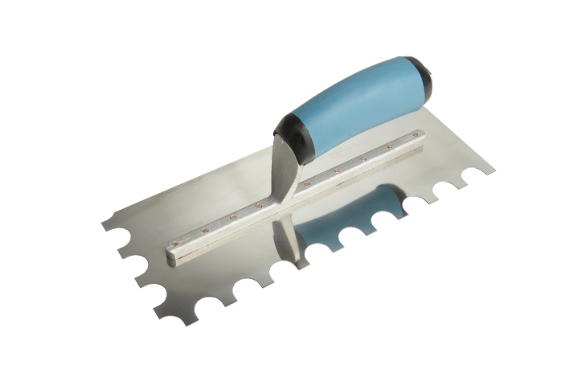An adhesive spreader is a tool used to evenly distribute glue, adhesive, or other bonding agents onto surfaces before joining them together. These spreaders are essential in various industries, including construction, woodworking, flooring, and packaging, where strong and even adhesion is required.
Adhesive spreaders come in different forms, from manual tools like notched trowels and rollers to automated machines designed for large-scale applications. Choosing the right spreader depends on the type of adhesive, surface material, and the required bonding strength.
In this article, we will explore the types of adhesive spreaders, their uses, and how to choose the right one for different applications.
Types of Adhesive Spreaders
There are several types of adhesive spreaders, each designed for specific applications:
1. Notched Trowels
✅ Commonly used in tile installation, flooring, and construction.
✅ Features a flat metal blade with notches that create uniform ridges of adhesive.
✅ Ensures consistent thickness for better bonding.
Example: A 1/4-inch notched trowel is often used for ceramic tiles, while a 1/2-inch notched trowel is suitable for large-format tiles.

2. Adhesive Rollers
✅ Used for applying liquid adhesives, glue, or contact cement to surfaces like wood, fabric, or laminate.
✅ Comes in manual or automatic versions.
✅ Ensures a smooth and even coating with minimal waste.
Example: Flooring professionals use rubber rollers to spread adhesive for vinyl or carpet installations.
3. Adhesive Spread Machines
✅ Used in industrial settings for large-scale adhesive applications.
✅ Ensures high precision and efficiency in production lines.
✅ Can handle hot-melt, water-based, and solvent-based adhesives.
Example: The Automatic FIBC Bags Printer uses an adhesive spreader to apply glue before printing logos on flexible intermediate bulk containers (FIBCs).
4. Glue Brushes and Spatulas
✅ Ideal for small-scale woodworking, crafts, and paper applications.
✅ Provides precision control for applying adhesive in tight spaces.
✅ Often used with wood glue, PVA glue, and epoxy adhesives.
Example: A silicone glue brush is perfect for spreading wood glue on furniture joints.
Uses of an Adhesive Spreader
Adhesive spreaders are widely used in different industries for various purposes:
1. Flooring Installation
- Used to spread tile adhesives, carpet glue, and vinyl flooring adhesives.
- Notched trowels and rollers ensure even adhesive coverage to prevent loose tiles or flooring.
2. Woodworking and Cabinet Making
- Spreaders help apply wood glue on joints, veneers, and laminates.
- Ensures strong adhesion without excess glue seeping out.
3. Packaging and Labeling
- Industrial adhesive spreaders apply glue to cardboard, labels, and packaging materials.
- Ensures secure bonding in automated production lines.
4. Construction and Panel Bonding
- Adhesive spreaders are used for applying construction adhesives on drywall, insulation panels, and wall cladding.
- Ensures long-lasting adhesion and structural stability.
How to Choose the Right Adhesive Spreader
Selecting the best adhesive spreader depends on several factors:
✅ Type of Adhesive: Some adhesives require notched trowels (for thick adhesives) while others need rollers or machines (for liquid adhesives).
✅ Application Size: For small projects, brushes or rollers work best; for large-scale applications, automatic spreaders are more efficient.
✅ Surface Material: Rough surfaces may require a notched spreader, while smooth surfaces work well with a roller or machine.
✅ Precision Needs: For detailed work, small brushes and spatulas provide better control.
Conclusion
An adhesive spreader is an essential tool for evenly applying glue or adhesive in various applications, from flooring and woodworking to industrial manufacturing. Choosing the right spreader ensures strong adhesion, efficient material use, and high-quality results. Whether using a notched trowel, roller, brush, or industrial adhesive spreader, selecting the right tool will improve the bonding process and the durability of the final product.
Post time: 3月-20-2025






